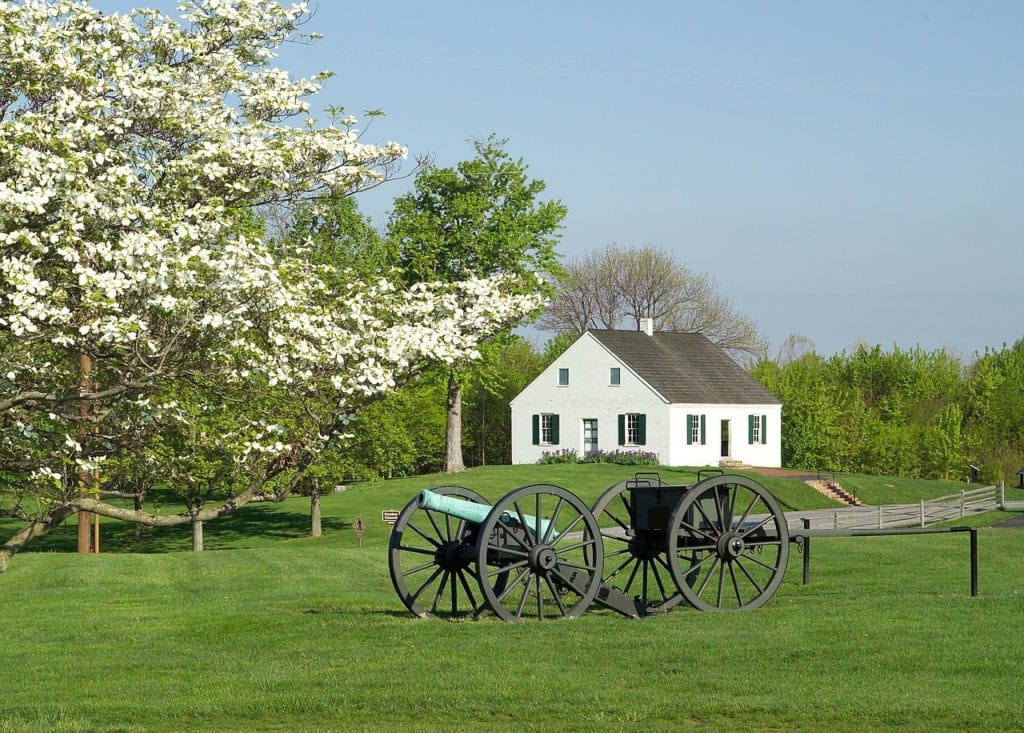
Article Summary: National Parks Near Baltimore
National Parks Near Baltimore! There’s so much more to the Old Line State than Baltimore Orioles. In this article, More Than Just Parks gives you some exciting vacation destinations within a day’s drive of Baltimore.
I’ve been to so many of these amazing places since retiring from teaching in 2018. Did I mention that I taught history? I spent a lifetime teaching about the history behind these momentous sites. Then I got to see them firsthand. And now I’m sharing the stories of these incredible places with you. It doesn’t get any better than that!
Baltimore is famous for many things, including being the birthplace of the National Anthem, the home of the Ravens and Orioles, and the city with the best crab cakes. It’s been featured in pop culture classics ranging from The Wire to Hairspray.
And it’s also home to some amazing national parks which are within a day’s drive (or less) of the city.
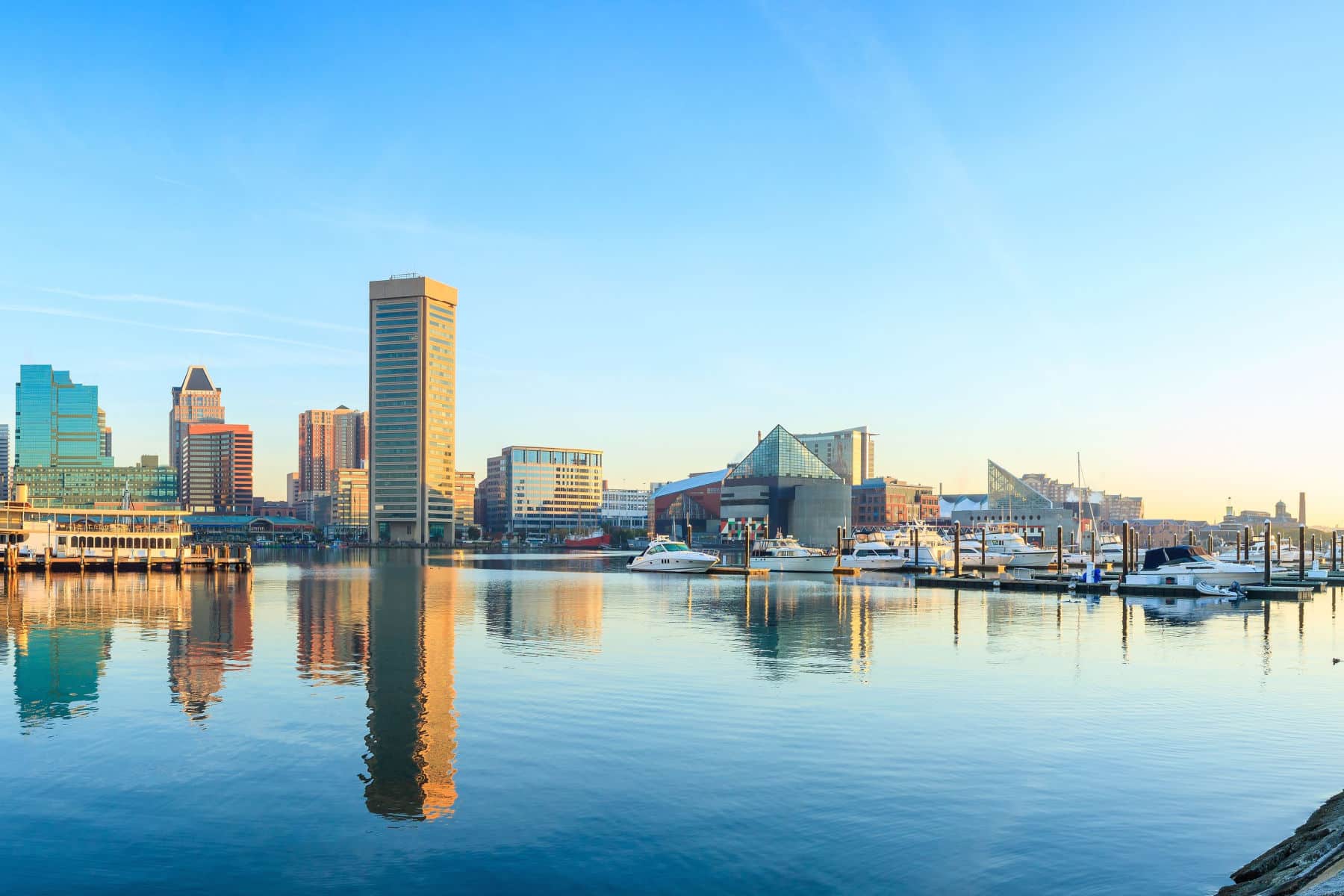
So, What Is A National Park?
We get asked that question a lot because there’s a difference between a “national park” and a “national park site.” To help you understand that difference you might want to check out our article titled: What Is A National Park Really?
If you’re planning a trip to Baltimore then one book that I highly recommend is: 111 Places in Baltimore That You Must Not Miss (111 Places in …. That You Must Not Miss) by Alison Robicelli.
Now let’s go ahead with 10 reasons why you’ll want to hop in your car and make a day’s drive from Baltimore to one of these truly amazing places.
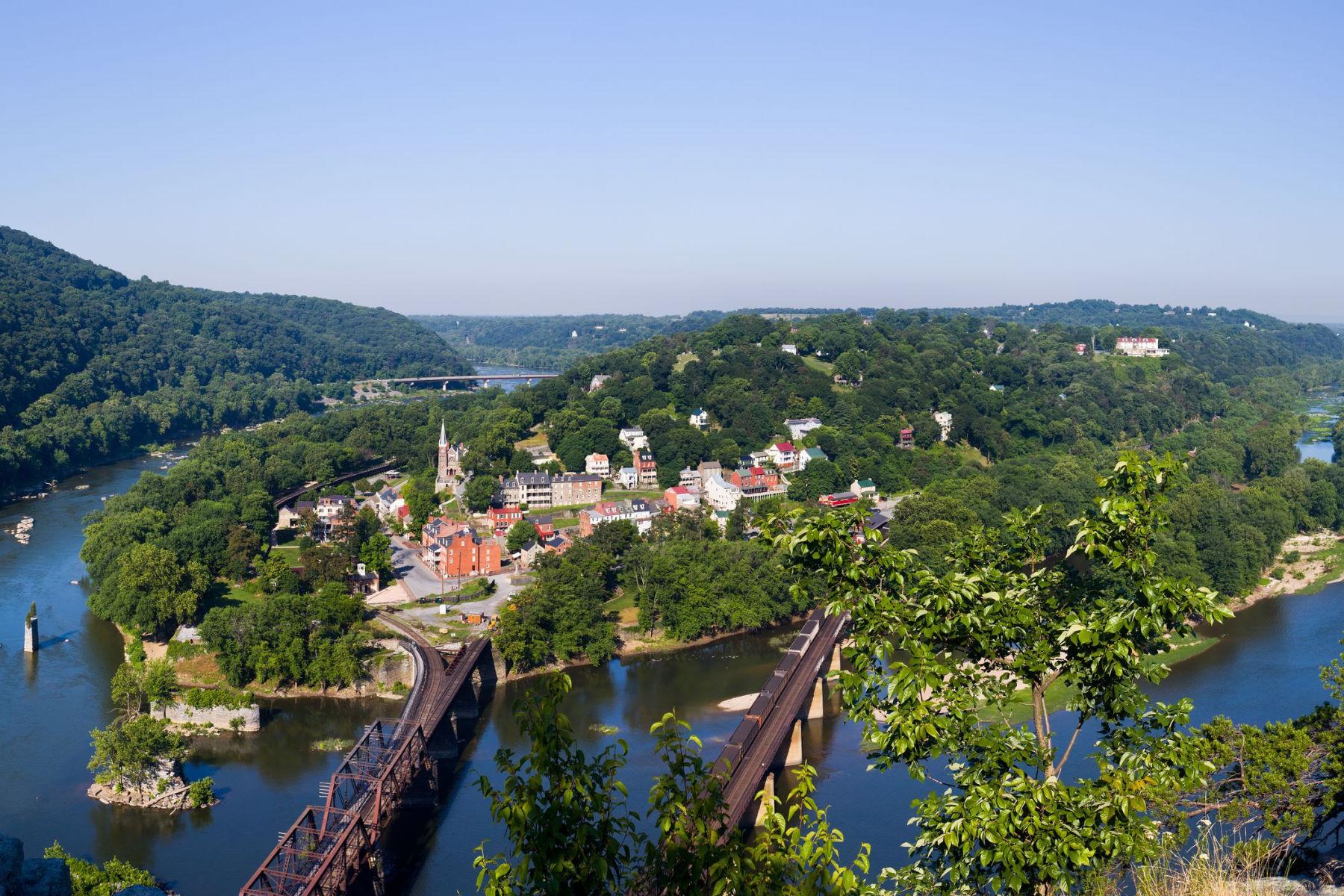
Table Of Contents: National Parks Near Baltimore
Best National Park Sites Near Baltimore
1. Antietam National Battlefield
Distance From Baltimore: One hour & 22 minutes via I-70 W.
I’m a retired history teacher who likes nothing better than to pack up his car and go off in search of America’s past. And National Parks Near Baltimore have a lot to offer in this department!
Antietam National Battlefield is a site in Sharpsburg, Maryland that was the location of the Battle of Antietam during the American Civil War.
The battle took place on September 17, 1862, and was one of the bloodiest battles of the Civil War, with over 23,000 casualties. The battle was fought between Confederate forces under General Robert E. Lee and Union forces under General George B. McClellan.
After the battle, the site remained largely undisturbed until the late 1800s, when local residents began to take an interest in preserving the memory of the battle. In 1890, the Antietam National Cemetery was established, and in 1933 the battlefield was declared a National Military Park.
Over the years, the National Park Service has worked to preserve and interpret the battlefield, restoring key parts of the battlefield to their appearance at the time of the battle and installing monuments, markers, and exhibits to help visitors understand the history of the battle.
Today, Antietam National Battlefield is a popular destination for history enthusiasts and Civil War buffs, and is considered one of the most important and well-preserved Civil War battlefields in the country.
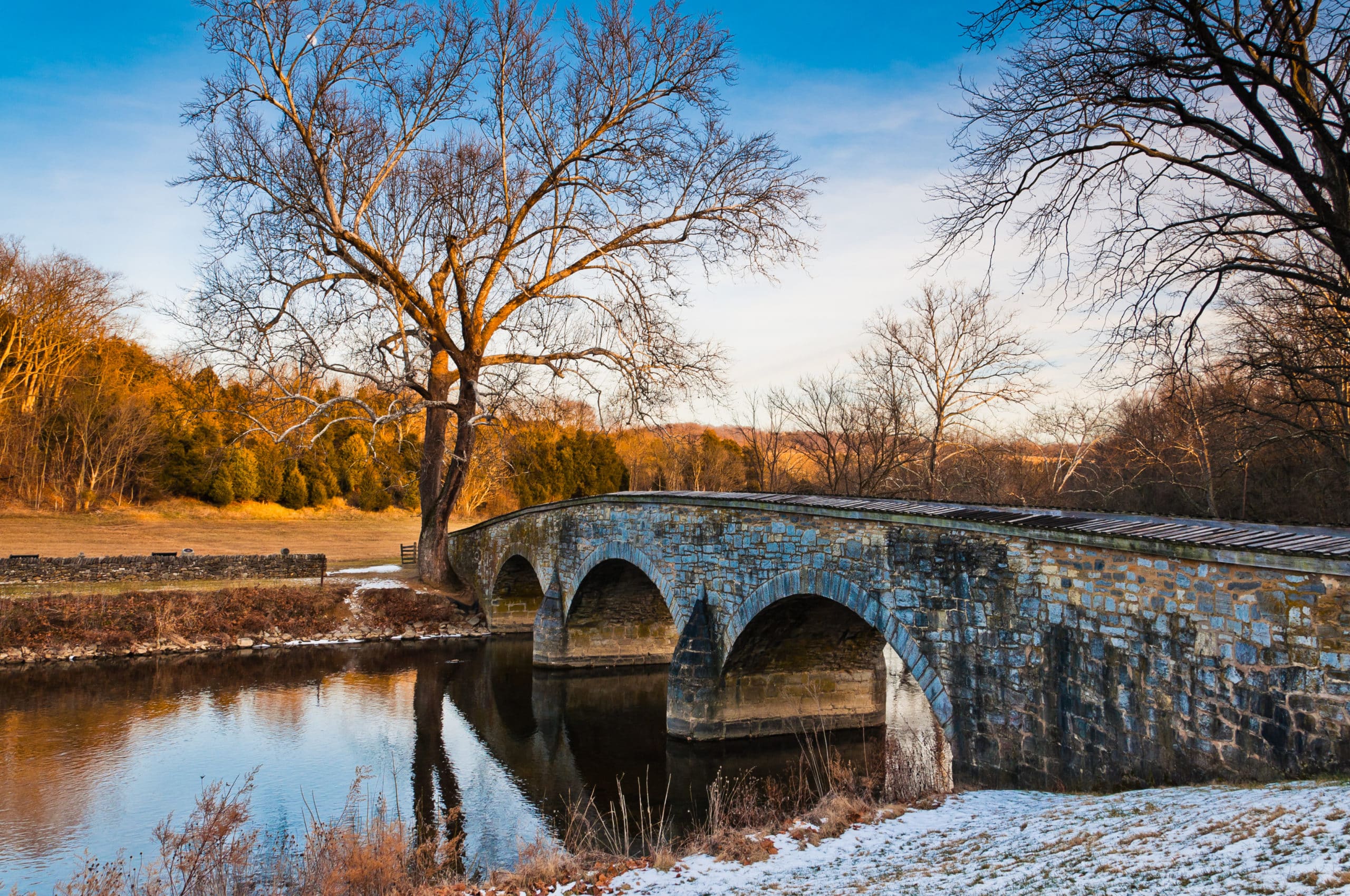
Six Other Ways That Antietam Changed The Course Of History
- Robert E. Lee is the military genius who confounded one northern general after another. Lee was fresh off of his victory in the Second Battle of Bull Run. At Antietam, his plan was to invade the north. He was repelled, however, and would not attempt another invasion of the North until the Battle of Gettysburg in 1863.
- A string of Confederate victories in the summer of 1862 had brought France and Great Britain close to recognition of the Confederate States of America. This would have been devastating for the Union cause. Lee’s inability to win a decisive victory at Antietam halted this momentum towards diplomatic recognition.
- The Union’s ability to stop Lee and force him to withdraw lifted northern morale.
- Antietam was one of the first battles in history to feature photographic images of twisted bodies littering the devastated landscape and stacked in heaps like slaughtered livestock. These images brought the horror of war home to the civilian population.
- The Union’s ability to stop Lee helped President Lincoln’s Republican Party in the 1862 elections. Democrats had been highly critical of the President’s conduct of the war. They were hoping to make significant political gains. Republicans, however, actually gained seats in the Senate and maintained a majority in the House.
- While Lee was stopped, Union Commander George McClellan refused to pursue Lee’s Army as Lincoln felt he should have. For McClellan, this was the beginning of the end as Lincoln began to search for a new commander.

RELATED: 10 BEST Civil War Sites In America
Things To Do At The Antietam National Battlefield
If you’re a first-timer then I definitely recommend beginning your trip at the visitor center. The Newcomer House and Barn are positioned at the eastern gateway to the Antietam National Battlefield.
The Newcomer House serves as Visitor Center for the Heart of the Civil War Heritage Area. There you can see museum exhibits about the battle.
There is a self-guided 8 1/2 mile auto tour through the battlefield. The tour has 11 stops and begins at the Dunker Church.
Or, if you prefer walking to driving then you can hike the Bloody Lane, Cornfield, Final Attack, Union Advance, Antietam Remembered, Sherrick Farm or Snavely Ford Trails.
I recently traveled to Antietam with my wife and son. While there, I picked up A Fierce Glory: Antietam–The Desperate Battle That Saved Lincoln and Doomed Slavery by Justin Martin. It’s a thoughtful examination of how this battle changed the trajectory of the conflict.
2. Assateague Island National Seashore
The distance between Baltimore and Assateague Island National Seashore is 113 miles.
Assateague Island National Seashore is a 37-mile long barrier island located along the coast of Maryland and Virginia in the United States.
The island is known for its beautiful sandy beaches, dunes, salt marshes, and wildlife, including a herd of wild ponies that roam the island.
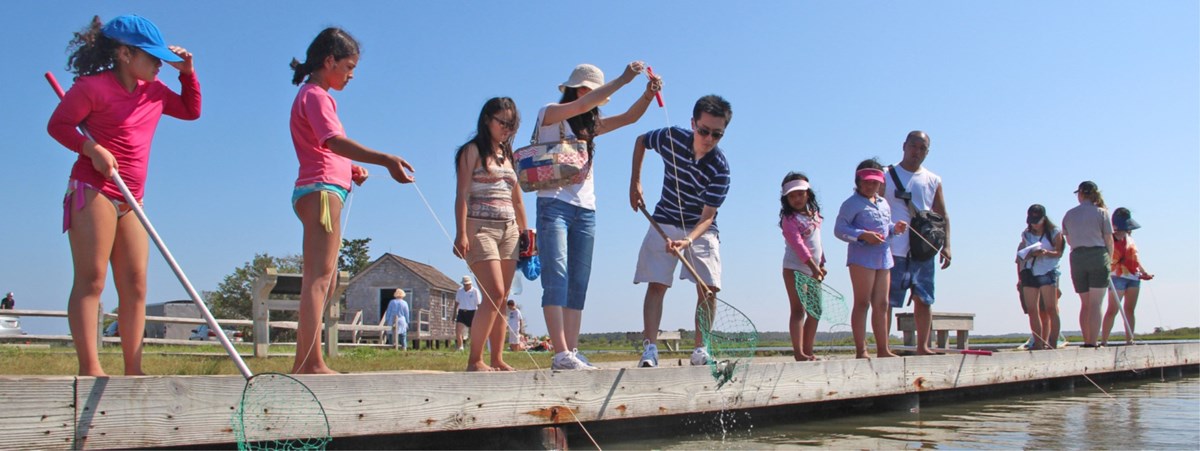
Things To Do
Visitors to the park can enjoy a wide range of outdoor activities, including:
- Camping: There are several campgrounds located within the park, offering opportunities for tent and RV camping.
- Hiking: There are several trails throughout the park, offering visitors the chance to explore the unique landscapes and wildlife of Assateague Island.
- Wildlife viewing: The park is home to a wide variety of wildlife, including the famous Assateague ponies, as well as other mammals, birds, and reptiles.
- Surfing and swimming: The park’s Atlantic Ocean beaches offer opportunities for swimming and surfing, as well as fishing and beachcombing.
- Paddling: Visitors can explore the park’s waterways by kayak or canoe, providing a unique perspective on the park’s wildlife and landscapes.
- Photography: With its breathtaking natural beauty, Assateague Island National Seashore is a photographer’s dream, offering endless opportunities to capture stunning images.
- Ranger-led activities: The park offers a variety of ranger-led activities, including guided hikes, campfire programs, and beach walks.
- Horseback riding: Horseback riding is allowed on some of the park’s trails and beaches, offering a unique way to explore the park’s beauty.
3. Chesapeake & Ohio Canal National Historical Park
Distance From Baltimore: One hour via I-95 S & I-495 W.
The Chesapeake & Ohio Canal National Historical Park is a park located along the Potomac River in Maryland and Washington, D.C.
The park encompasses the historic Chesapeake & Ohio (C&O) Canal, a 184.5-mile long canal that was built in the early 19th century to connect the Chesapeake Bay with the Ohio River.
Construction of the canal began in 1828 and was completed in 1850, at which time it was the longest canal in America. The canal was used primarily to transport coal, lumber, and agricultural products from the western part of the state to markets in the east. The canal operated for almost 100 years, but was eventually abandoned in the early 20th century due to competition from railroads and the growth of automobile transportation.
In 1938, the federal government established the Chesapeake & Ohio Canal National Monument, which was later re-designated as a National Historical Park in 1971. Today, the park preserves the historic canal and its structures, as well as offering recreational opportunities such as hiking, camping, fishing, and boating.
Visitors to the park can learn about the history of the canal and the people who built and worked on it by exploring the park’s many historic structures, such as locks, aqueducts, and towpaths. The park also offers a unique glimpse into the natural beauty of the Potomac River valley, with scenic views of the river, forests, and wildlife.
The Chesapeake & Ohio Canal National Historical Park is a popular destination for history enthusiasts, outdoor recreationalists, and families looking for a unique and historic experience.
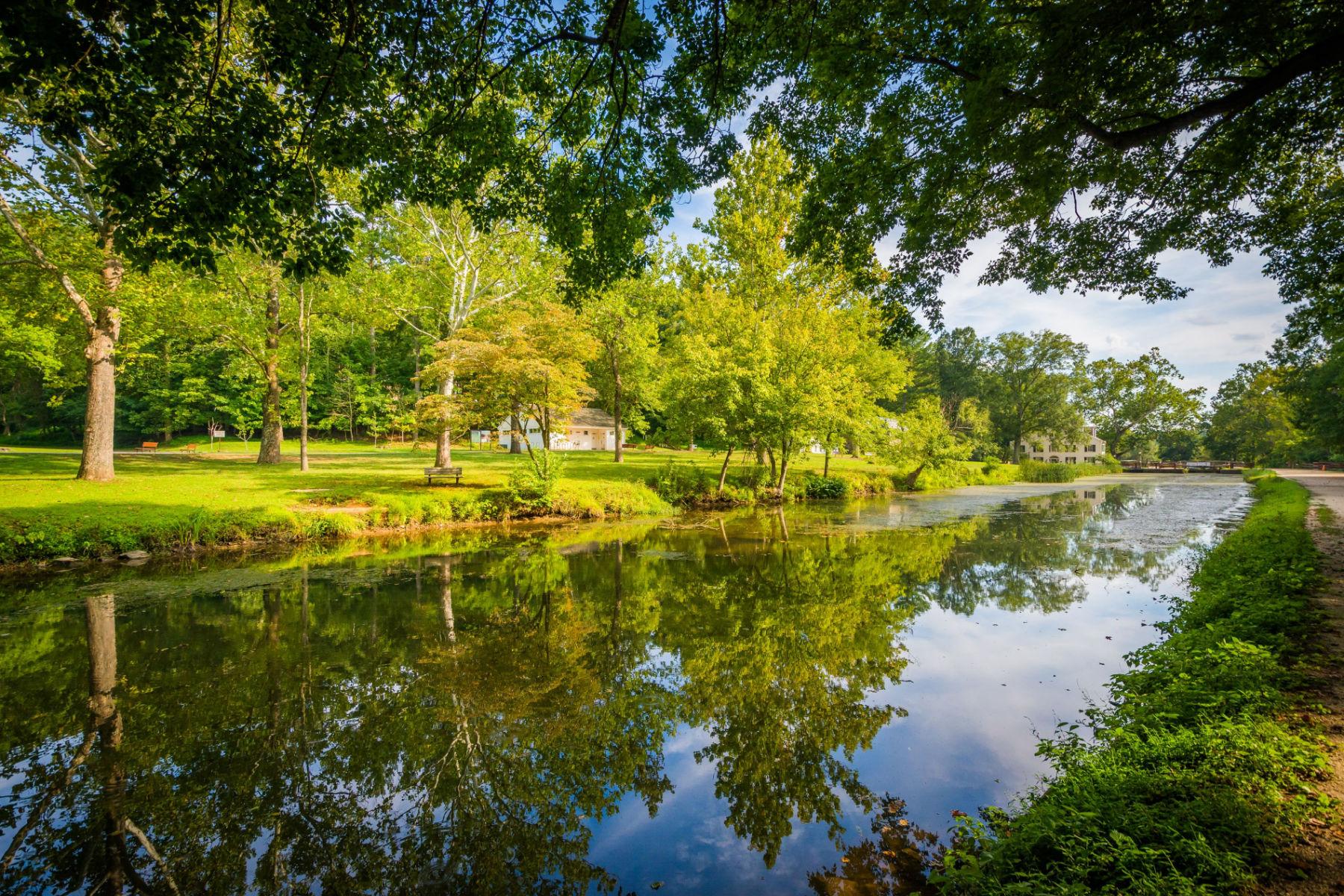
RELATED: 5 EPIC Illinois National Parks
More National Parks Near Baltimore
4. Clara Barton National Historic Site
Distance From Baltimore: 50 minutes via I-95 S & I-495 W.
The Clara Barton National Historic Site is a museum located in Glen Echo, Maryland, that tells the story of Clara Barton, the founder of the American Red Cross. Clara Barton was born in Massachusetts in 1821 and went on to become a teacher, nurse, and humanitarian who dedicated her life to helping others.
During the American Civil War, Barton worked as a nurse and volunteer, providing assistance to soldiers on the front lines and organizing supplies for them. After the war, she continued her work as a humanitarian, helping to distribute supplies and provide assistance to those in need.

She Founded The American Red Cross
In 1881, Barton founded the American Red Cross, an organization dedicated to providing assistance to those in need, particularly during times of war and natural disaster. She served as the first president of the American Red Cross until 1904, and her work with the organization helped to establish it as one of the most important humanitarian organizations in the world.
After her retirement, Barton moved to Glen Echo, Maryland, where she lived in a small cottage on the banks of the Potomac River. She lived there until her death in 1912. In 1974, the Clara Barton National Historic Site was established to commemorate Barton’s life and work, and to preserve her cottage as a museum and educational resource.
Today, the Clara Barton National Historic Site is a popular destination for history enthusiasts, students, and anyone interested in learning about the life and work of this important historical figure. The museum offers exhibits and educational programs about Clara Barton and her work, as well as tours of her cottage, which has been restored to its appearance during her lifetime.

Things To See At The Clara Barton National Historic Site
The National Park Service has restored eleven rooms, including the Red Cross offices, parlors and Clara Barton’s bedroom. Visitors to Clara Barton National Historic Site can see how Barton lived and worked surrounded by all that went into her life’s work.
Visitors are led through the three levels on a guided tour emphasizing Barton’s use of her unusual home. There are 9 acres of land at her Glen Echo home including the 38-room former residence of Barton.
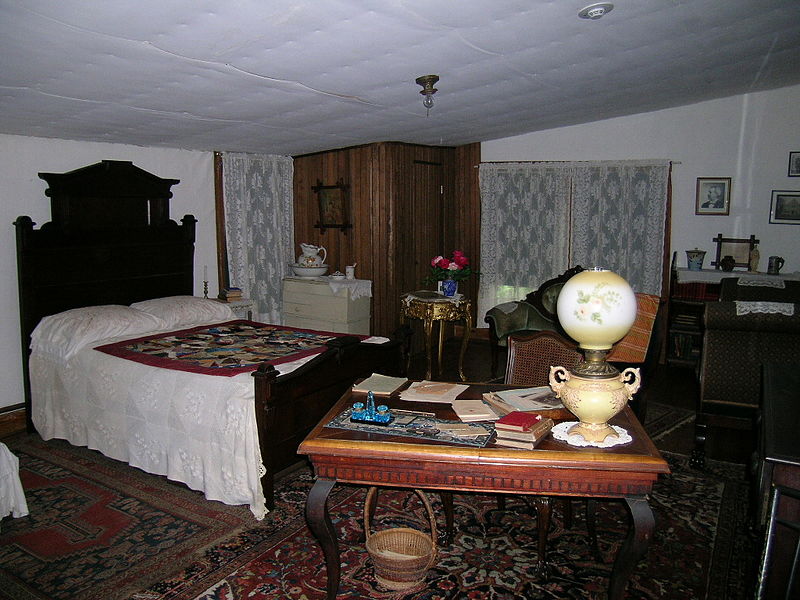
RELATED: 6 EPIC National Parks Near Charlotte You’ll Love
5. Fort McHenry National Monument & Historic Shrine
Distance From Baltimore: 12 minutes via Key Hwy & E. Fort Ave.
Fort McHenry National Monument & Historic Shrine is best known for its role in the War of 1812, when it withstood a 25-hour bombardment by the British navy in September 1814.
This attack inspired Francis Scott Key to write the poem that would become the U.S. national anthem, “The Star-Spangled Banner.”

The Fort Was Built To Protect Baltimore From An Attack By Sea
Fort McHenry was originally built in 1798 to protect Baltimore Harbor from attack by sea. It was named after James McHenry, a surgeon and military officer who served in the Continental Army during the American Revolution.
During the War of 1812, the fort played a critical role in protecting Baltimore from attack by the British.

After the War of 1812, Fort McHenry continued to play a role in the defense of Baltimore, serving as a military prison and as a training ground for soldiers during the Civil War.
In the late 19th and early 20th centuries, the fort was used as a training ground for various military units, and it was designated as a National Monument and Historic Shrine in 1925.

Today, Fort McHenry National Monument & Historic Shrine is a popular tourist destination and an important symbol of American history.
Visitors to the fort can explore its historic structures, including the ramparts and barracks, as well as learn about the fort’s role in the War of 1812 and its significance as the birthplace of the U.S. national anthem. The park also offers educational programs and events that highlight the fort’s rich history and cultural significance.
RELATED: 10 BEST Revolutionary War Sites In America
Explore Fort McHenry
I recommend beginning your adventure at the visitor center where you can see the park movie. It’s a wonderful way to become familiar with the park’s history.
The fort tour is self-guided with informative exhibits to help visitors understand its historical importance.
At the Fort McHenry National Monument and Historic Shrine, spectators can also partake in a variety of programs, including the Fort, Flag and Fire Ceremony every Saturday at 2 p.m. in July and August, which invites spectators to enjoy guided tours and even assist in the changing of the 42-foot flag.
After the history lesson, you can relax on the grounds and enjoy a picnic with the family.
My favorite part of the tour was soaking in the scenic views of the water and brushing up on American history with “flag talks” given by highly informative park rangers.
RELATED: 12 EPIC National Parks Near Atlanta You’ll Love
6. Glen Echo Park
Distance From Baltimore: 50 minutes via I-95 S & I-495 W.
Glen Echo Park is a park and cultural center that was originally established in 1891 as the Glen Echo Amusement Park, and it was one of the first trolley parks in the country.
Trolley parks were recreational areas built near the end of urban trolley lines, and they were designed to provide a place for city dwellers to escape to for a day of recreation and entertainment.

Glen Echo Was A Popular Destination For Families
During its time as an amusement park, Glen Echo Park was a popular destination for families, offering a variety of attractions, such as a dance pavilion, a carousel, a scenic railway, and a variety of other rides and games. The park was also a popular gathering place for social events, such as picnics and family outings.
In the 1930s, the National Park Service acquired Glen Echo Park as part of a larger effort to establish parks and recreation areas in the Washington, D.C. metropolitan area.
During World War II, the park was used as a center for war-related activities, and after the war, it was repurposed as an arts center, offering classes and workshops in a variety of creative arts, such as painting, pottery, and dance.
Today, Glen Echo Park is a vibrant cultural center, offering a variety of arts and cultural programs for visitors of all ages. The park is home to a number of arts organizations, including the Puppet Co. Playhouse, the Glen Echo Park Partnership for Arts and Culture, and the Adventure Theater.
The park also offers a range of classes and workshops in the arts, as well as regular exhibitions and performances by local artists and performers. Glen Echo Park is a popular destination for families, arts enthusiasts, and anyone looking to experience the rich cultural heritage of the Washington, D.C. metropolitan area.
RELATED: 5 MUST-SEE Historic Sites In Alabama
7. Harpers Ferry National Historical Park
Distance From Baltimore: One hour & 11 minutes via I-70 W & US-340 W.
Harpers Ferry National Historical Park is situated at the confluence of the Potomac and Shenandoah rivers, and it has played a significant role in American history, serving as a center of transportation, industry, and military activity.
Harpers Ferry was founded in 1751 by Robert Harper, and it quickly became an important center of trade and transportation, serving as a key point along the Potomac River for the transport of goods and people.
In 1859, Abolitionist John Brown led a small group on a raid against a federal armory in Harpers Ferry, Virginia (now West Virginia), in an attempt to start an armed revolt of enslaved people and destroy the institution of slavery. Brown’s raid was one of the events which triggered the American Civil War.
During the American Civil War, Harpers Ferry was a center of military activity, and it was the site of several important battles, including the Battle of Harpers Ferry in September 1862.

Harpers Ferry After The Civil War
After the war, Harpers Ferry continued to be an important center of industry, and it was home to a number of important factories and businesses. In 1944, Harpers Ferry National Historical Park was established to preserve and interpret the rich cultural and historical heritage of the area.
Today, Harpers Ferry National Historical Park is a popular destination for history enthusiasts, students, and anyone interested in learning about American history.
The park offers a range of educational programs and tours, including walking tours of the historic town, visits to the National Park Service museum, and opportunities to explore the historic structures and landscapes of the area.
Harpers Ferry is also a popular destination for outdoor recreation, offering a variety of trails for hiking, camping, and fishing.

Things To Do At Harpers Ferry
History truly comes to life at Harpers Ferry. There visitors can explore museums and exhibits, hike to overlooks or along Civil War skirmish lines, join a ranger-guided tour or sign-up for a living history workshop.
I recommend beginning your visit at the visitors center where you can pick up helpful information. Rangers are available to answer your questions.
Before heading out to explore the town and its surrounding natural beauty, as a history buff I recommend a stop at the Harpers Ferry Park Association’s Bookshop. It has a wonderful collection of books on the Civil War.
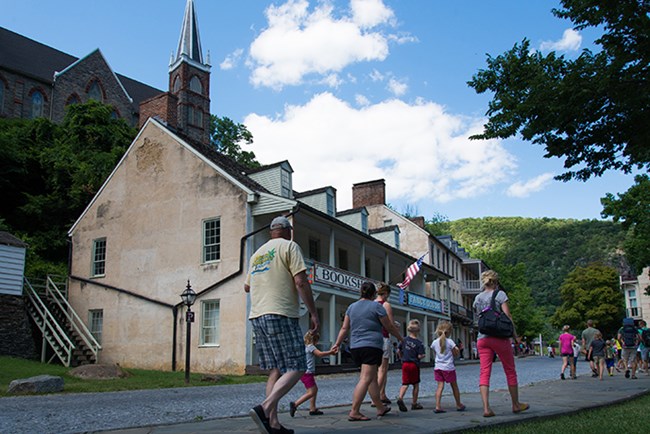
If you’re looking to combine history and nature then check out the 22 miles of hiking trails at Harpers Ferry. It happens to be the mid-point of the 2,178-mile Appalachian Trail.
Picnicking is also available at Harpers Ferry National Historical Park at a designated picnic area adjacent to the Visitor Center parking lot. Picnic tables are on a first-come, first-serve basis.
RELATED: 30 EPIC Virginia National Parks Worth Visiting
Still More National Parks Near Baltimore
8. Harriet Tubman Underground Railroad National Historical Park
Distance From Baltimore: One hour & 53 minutes via US-50E/Ocean Gateway.
The Harriet Tubman Underground Railroad National Historical Park is dedicated to preserving and interpreting the legacy of Harriet Tubman and the Underground Railroad.
The Underground Railroad was a network of secret routes and safe houses used by escaped slaves to travel to freedom in the North or in Canada.
Harriet Tubman was born into slavery in Maryland in the early 1820s, and she escaped to freedom in 1849. She returned to the South many times over the next decade, leading hundreds of slaves to freedom as a “conductor” on the Underground Railroad.
Things To Do At The Harriet Tubman National Historical Park
It’s an incredible experience to adventure to walk into the Harriet Tubman Underground Railroad Visitor Center. It’s in the heart of Dorchester County, Maryland, amid farm fields, creeks, and marshes.
You will find exhibits, an audio-visual program, visitor information, a museum store, research library, and seasonal interpretive programs.
While you’re in the neighborhood, you should also head over to Dorchester to see The Harriet Tubman Museum & Education Center. It started in the 1980s. It’s run by dedicated local volunteers who want to share Harriet Tubman’s story and preserve her legacy.
The museum building features a powerful and moving mural of Harriet Tubman that has attracted attention from around the country.
RELATED: 20 Best Black History Sites In America For You To Visit
9. Piscataway Park
Distance From Baltimore: One hour & 6 minutes via I-495 S/I-95 S.
If you’re looking for a lovely place to spend the day then why not visit Piscataway Park? If you enjoy watching wildlife it’s home to bald eagles, beavers, deer, foxes, ospreys, and many other species.
The park also has a public fishing pier and two boardwalks over fresh water tidal wetlands, a variety of nature trails, meadows, and woodland areas.
While you’re there you should also check out the National Colonial Farm. It’s a historic farm museum that demonstrates 18th century agriculture.
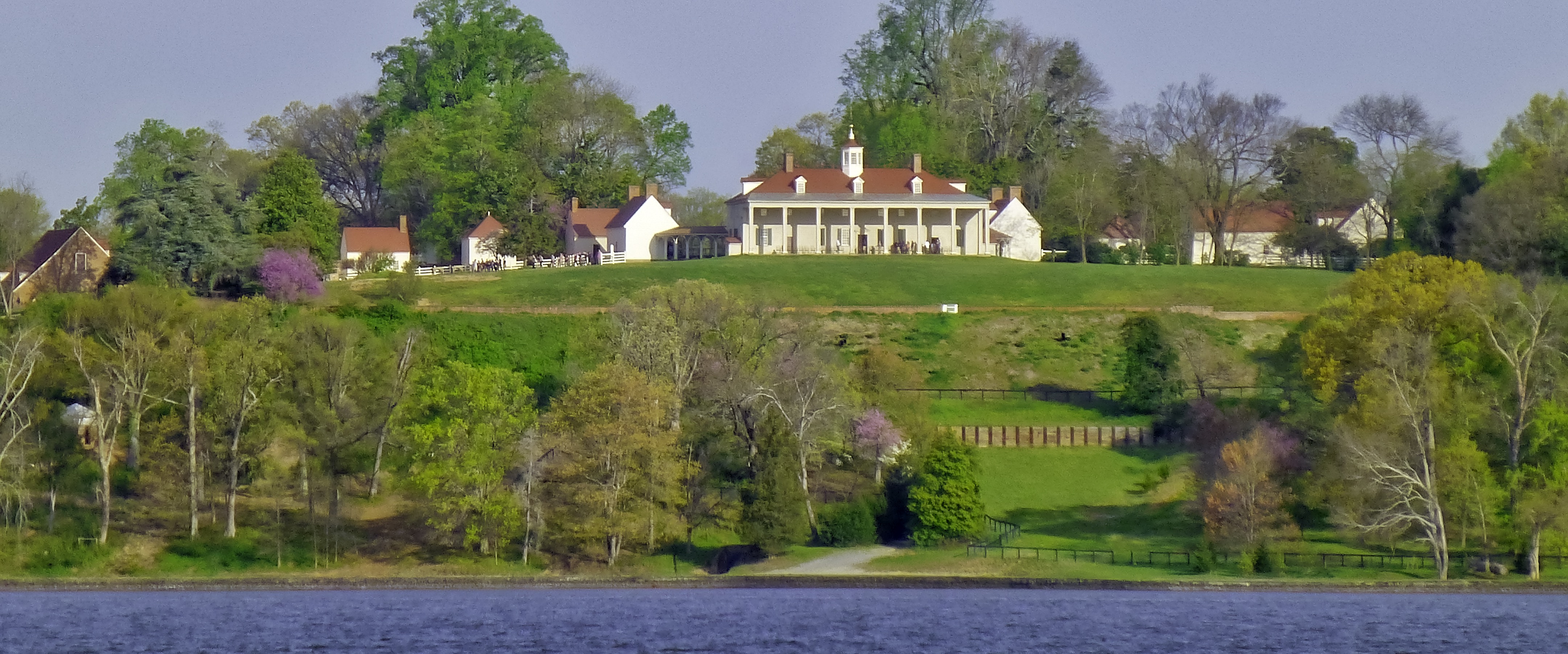
10. Star-Spangled Banner National Historic Trail
Distance From Baltimore: 13 minutes via Key Hwy & E. Fort Ave.
The 560-mile Star-Spangled Banner National Historic Trail takes you to battlefields and landmarks of the War of 1812. Points of particular interest include:
- Flag Raising at Fort McHenry
- Star-Spangled Banner Flag House and Museum
- Jefferson Patterson Park & Museum
- Fort Washington
- Concord Point Lighthouse
- North Point Beachhead War of 1812 Historic Sign
RELATED: 25 BUCKET-LIST FAMOUS LANDMARKS IN AMERICA (MUST-SEE)
National Parks Near Baltimore FAQ
Ten of Maryland’s twenty-four local jurisdictions are sites for national parks. To visitors and Marylanders alike, they make accessible historic homes, Civil War battle sites, mountain trails, and a view of the Atlantic Ocean.
There are 18 National Parks in Maryland that tell so many amazing stories! These parks include epic Assateague Island National Seashore, Harpers Ferry, Clara Barton National Historic Site and so many more!
Why Trust Us About National Parks Near Baltimore?
We’re Jim Pattiz and Will Pattiz, collectively known as the Pattiz Brothers (and sometimes the Parks Brothers) and we absolutely LOVE the national parks.
You should probably know that we don’t just make this stuff up out of thin air. We’ve spent our entire adult lives exploring and filming America’s national parks and public lands.
We’ve worked with the National Park Service, the Department of Interior, USDA, and the U.S. Forest Service for years creating films on important places and issues. Our work has been featured in leading publications all over the world and even some people outside of our immediate family call us experts on the national parks.
Meet The Parks Brothers
Map Of National Parks Near Baltimore
List Of National Parks Near Baltimore
- Antietam National Battlefield
- Assateague Island National Seashore
- Chesapeake & Ohio Canal National Historical Park
- Clara Barton National Historic Site
- Fort McHenry National Monument & Historic Shrine
- Glen Echo Park
- Harpers Ferry National Historical Park
- Harriet Tubman Underground Railroad National Historical Park
- Piscataway Park
- Star-Spangled Banner National Historic Trail
Learn More About Maryland With These Exciting Book Recommendations From More Than Just Parks
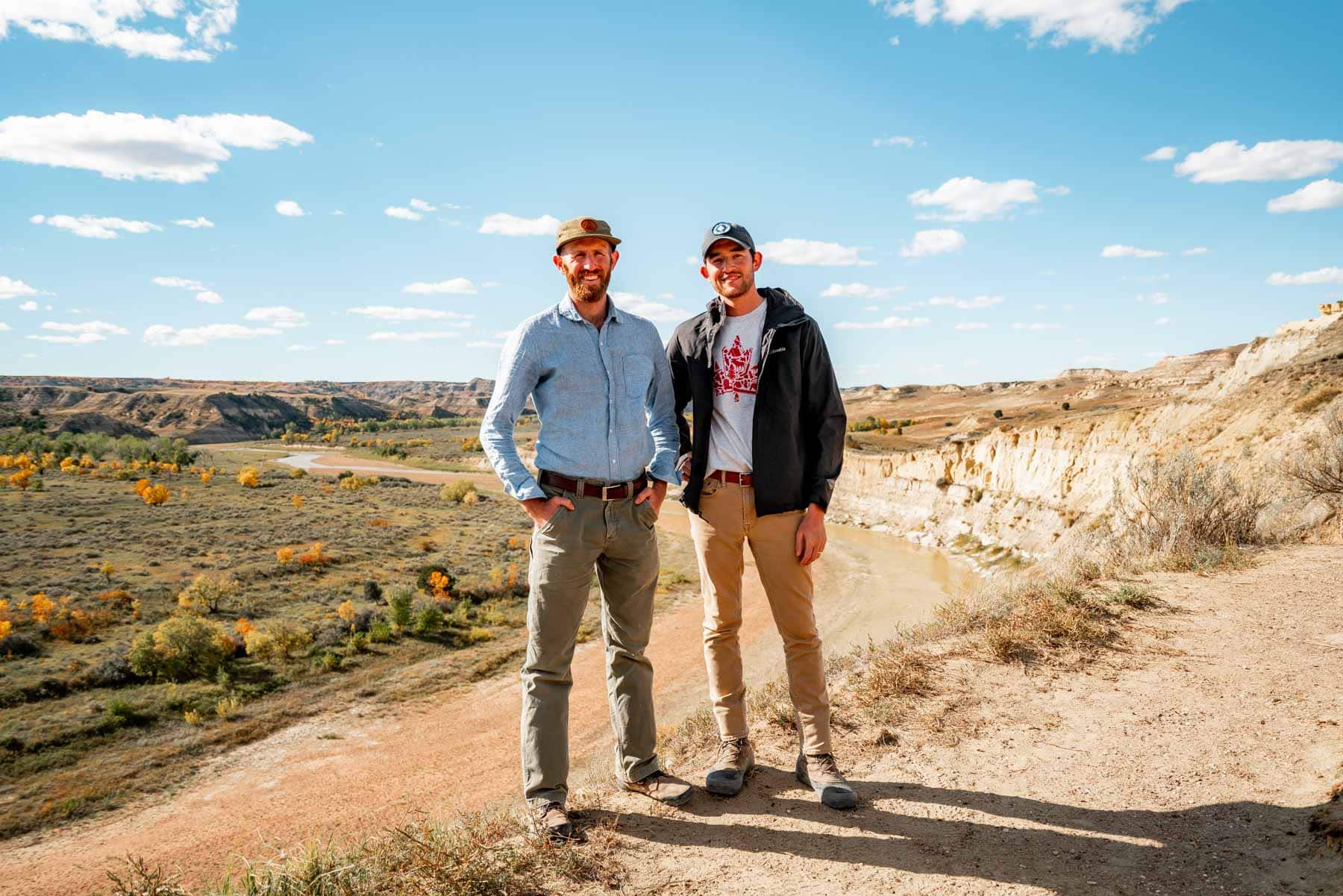
We’re More Than Just Parks which means we’re more than just parks. We believe that it’s not about the destination. Rather, it’s about the journey.
And it’s a journey of the body and the mind which is why we love to give you the opportunity to take a deeper dive so that you can learn about the history behind these special places.
We Have Some Wonderful Book Recommendations For You
With that in mind, we’ve got some wonderful book recommendations for you.
- Crossroads of Freedom: Antietam by James M. McPherson.
- Blazing Ahead: Benton MacKaye, Myron Avery, and the Rivalry That Built the Appalachian Trail by Jeffrey H. Ryan.
- Assateague Island A Guide to Assateague Island National Seashore Maryland and Virginia by William H. Amos.
- Captain John Smith: Writings with Other Narratives of Roanoke, Jamestown, and the First English Settlement of America by Captain John Smith.
- Woman of Valor: Clara Barton and the Civil War by Stephen B. Oates.
- What So Proudly We Hailed: Francis Scott Key, A Life by Marc Leepson.
- John Brown, Abolitionist: The Man Who Killed Slavery, Sparked the Civil War, and Seeded Civil Rights by David S. Reynolds.
- Harriet, The Moses of Her People: A Biography of Harriet Tubman by Sarah Hopkins Bradford.
- Fighting for Time: The Battle of Monocacy by Glenn H. Worthington.
- Washington-Rochambeau Revolutionary Route and the Franco-American Alliance by Donna Passmore and Jan Smulcer.
RELATED: 45 Best National Parks Books
We Hope You’ll Follow Our Journey

Our goal here at More Than Just Parks is to share the beauty of America’s national parks and public lands through stunning short films in an effort to get Americans and the world to see the true value in land conservation.
We hope you’ll follow our journey through the parks and help us to keep them the incredible places that they are. If you’re interested in joining the adventure then please sign up below!
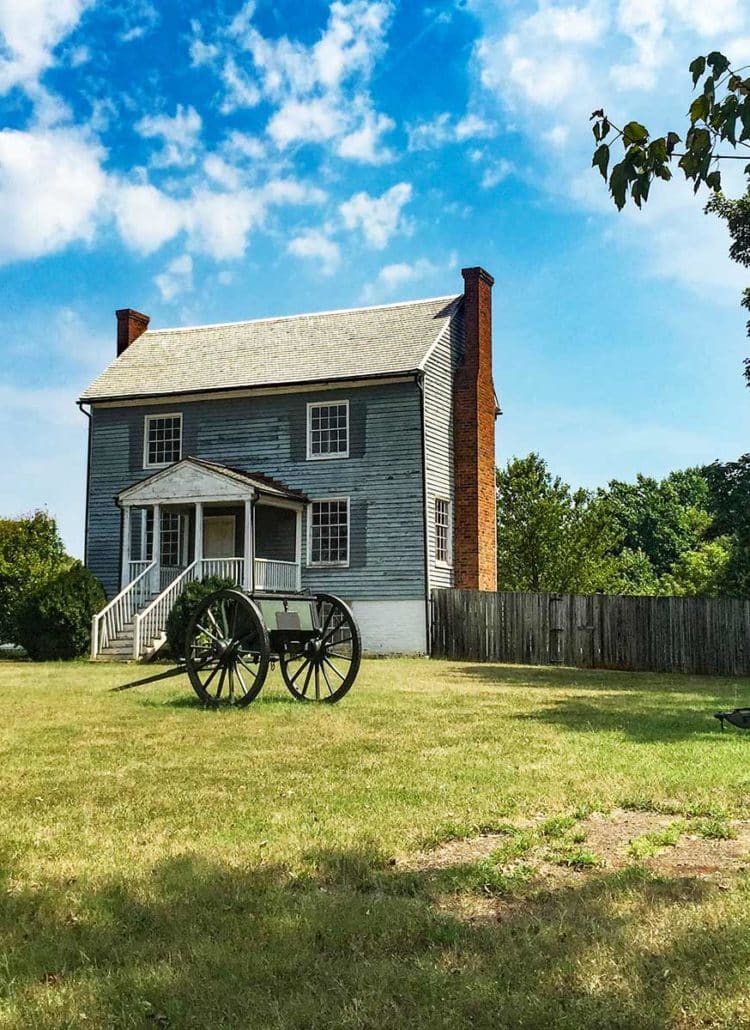

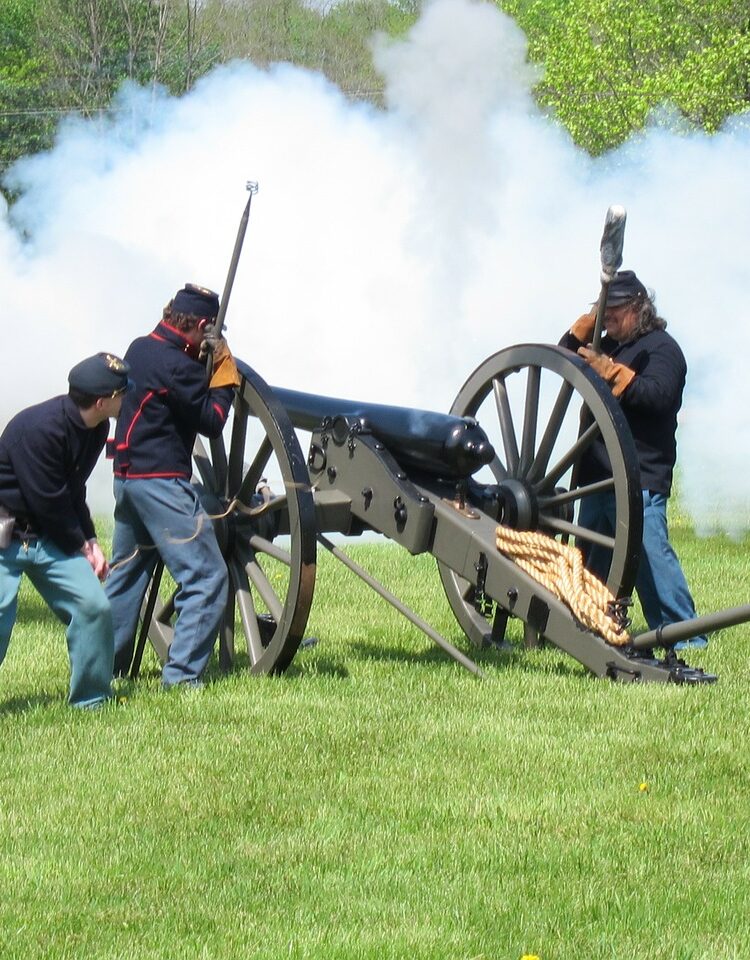


Leave a Reply